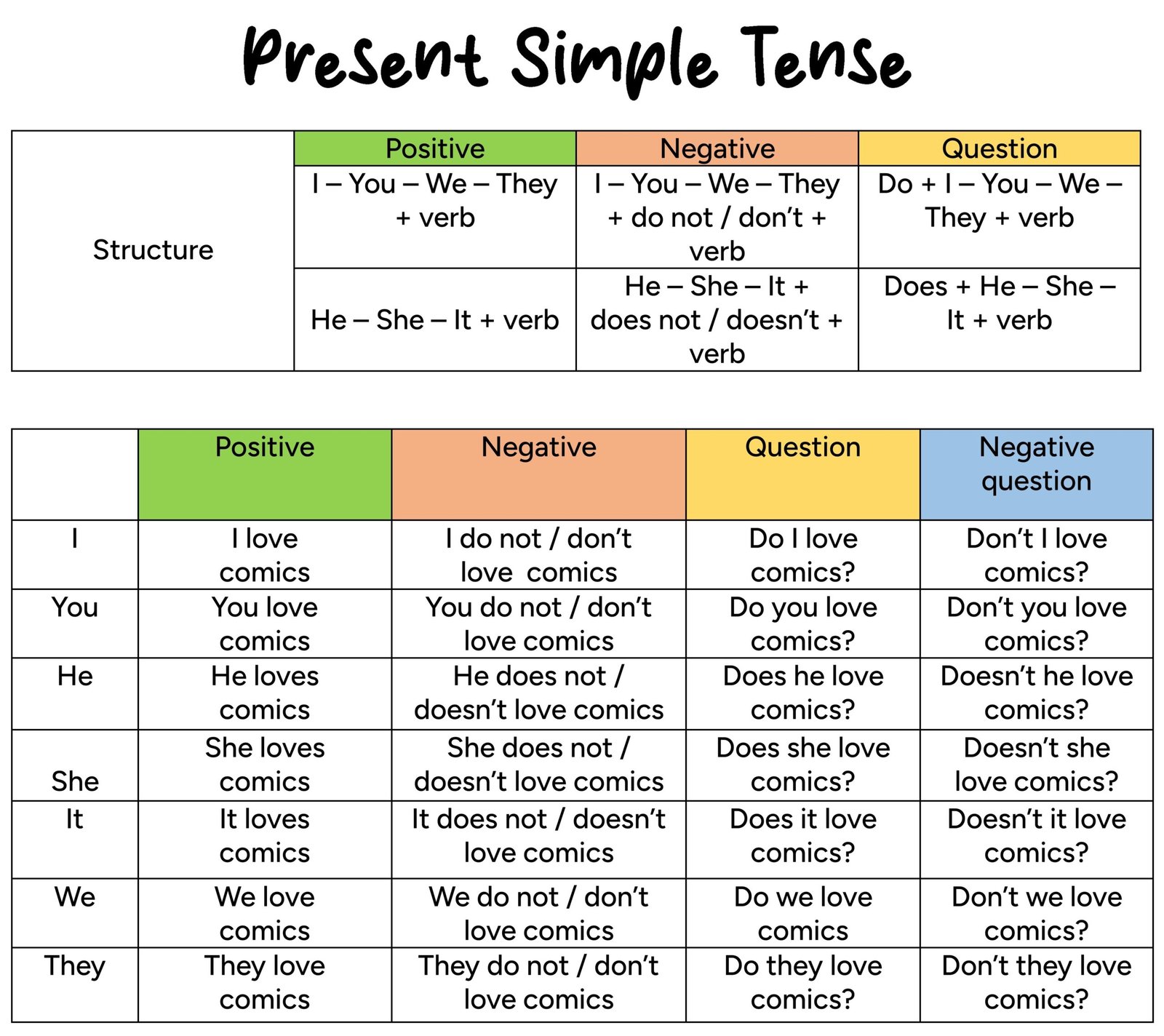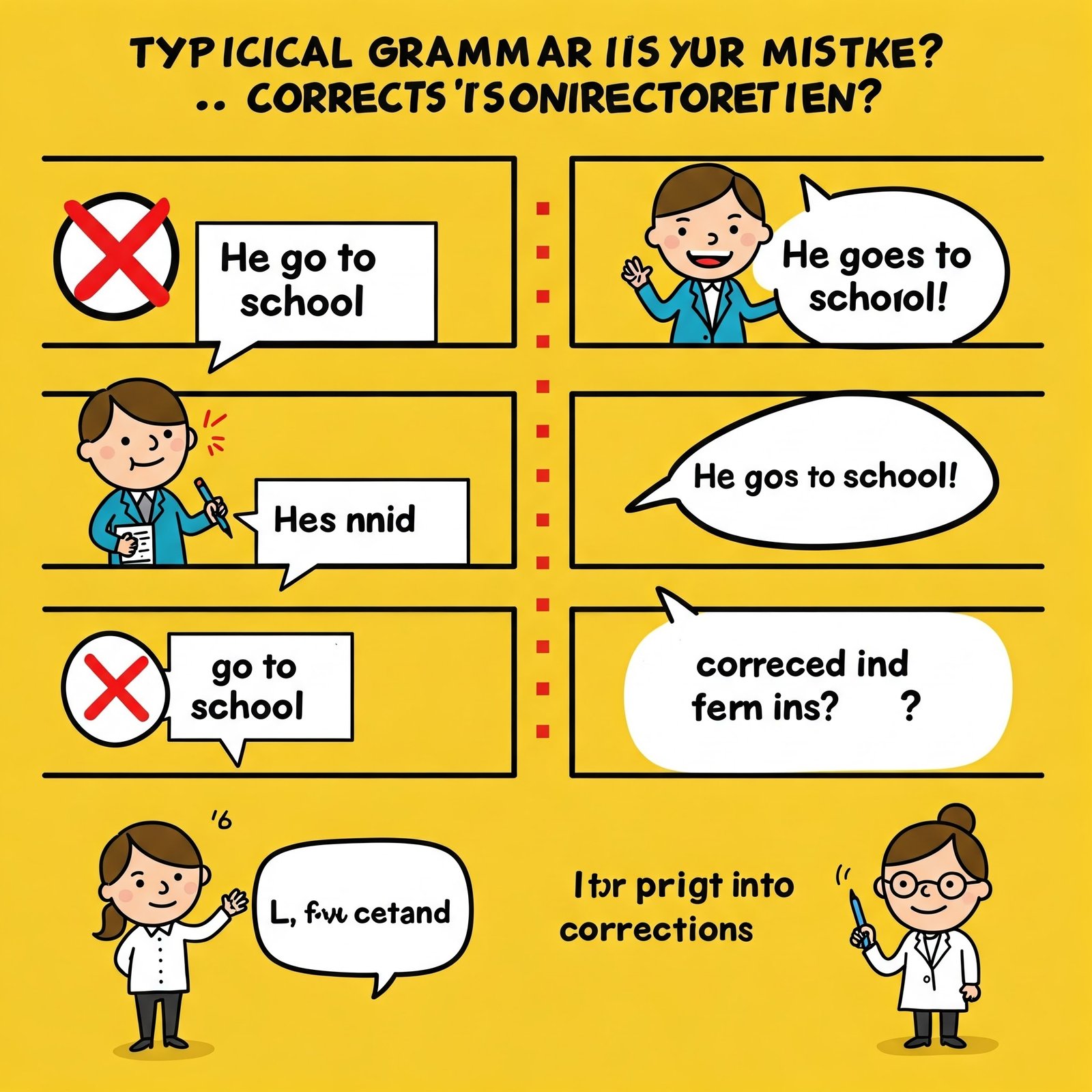
English Grammar Made Easy: Present Simple Explained
14 Apr 2025
What Is the Present Simple Tense?
The Present Simple tense describes actions or states that are general truths, habitual routines, or facts that do not require a time reference. For example:
Habitual Action: “I wake up at 7 a.m.”
General Truth: “The sun rises in the east.”
Repeated Action: “She takes the bus to work every day.”
Forming the Present Simple Tense
The structure of the Present Simple tense is straightforward:
For subjects I, You, We, They: Use the base form of the verb.
Example: “I play tennis.”
For subjects He, She, It: Add an “s” or “es” to the base form of the verb.
Example: “He plays tennis.”
Negative Form:
To form the negative, use “do not” (or “don’t”) for I, you, we, they, and “does not” (or “doesn’t”) for he, she, it.
Example: “They do not like spicy food.” or “She doesn’t like spicy food.”
Question Form:
Questions are formed by placing “do” or “does” before the subject.
Example: “Do you enjoy reading?” or “Does he work on weekends?”
When to Use the Present Simple
Understanding when to use the Present Simple can boost your fluency. Here are the main usage scenarios:
Daily Routines and Habits:
Use it when discussing routines or habitual actions.
Example: “They visit their grandparents every Sunday.”
Stating Facts and General Truths:
Express facts or truths that are always valid.
Example: “Water boils at 100°C.”
Timetables and Schedules:
Often used when referring to fixed future events, such as scheduled programs.
Example: “The train departs at 6 p.m.”
Common Mistakes to Avoid
Even though the rules are simple, beginners often encounter some common mistakes:
Forgetting the “S” in Third-Person Singular:
Always remember to add an “s” for he, she, and it.
Incorrect: “She go to school.”
Correct: “She goes to school.”
Overusing the Present Continuous:
Some learners mix up the Present Continuous with the Present Simple. Use the Present Continuous for actions happening right now, but reserve the Present Simple for regular or scheduled actions.
Incorrect: “I am playing tennis every weekend.”
Correct: “I play tennis every weekend.”
Misplacing Do/Does in Questions and Negatives:
Ensure you use “do” or “does” correctly when forming questions and negatives.
Tips for Mastery
To get comfortable with the Present Simple tense, try these practical tips:
Practice with Daily Sentences:
Write simple sentences describing your day-to-day activities. For example, “I eat breakfast at 8 a.m.” or “They work in an office.”
Listen and Repeat:
Listen to native speakers using the Present Simple in podcasts, TV shows, or YouTube videos. Repeat the sentences to get used to the rhythm and structure.
Use Flashcards:
Create flashcards with sentence structures or key verbs. Testing yourself regularly can help reinforce the patterns.
Interactive Quizzes and Exercises:
Engage with online quizzes to test your understanding. Regular self-assessment will highlight areas for improvement.
Learn Through Context:
See how the tense is used in context—reading articles, short stories, or dialogues can help you apply the rules in real-life situations.
Practice Exercise
Try converting these sentences into their negative and question forms:
Affirmative: “He enjoys classical music.”
Negative: “He does not enjoy classical music.”
Question: “Does he enjoy classical music?”
Affirmative: “They visit the park on Saturdays.”
Negative: “They do not visit the park on Saturdays.”
Question: “Do they visit the park on Saturdays?”
Final Thoughts
The Present Simple tense is a building block of English grammar. By understanding its structure, recognizing its usage, and practicing regularly, you can master this tense and improve your overall command of the language. Remember, consistency is key in language learning—small, daily steps will lead to long-term success. Keep practicing, and soon the rules of the Present Simple will become second nature.
Happy learning and keep practicing your English every day!




